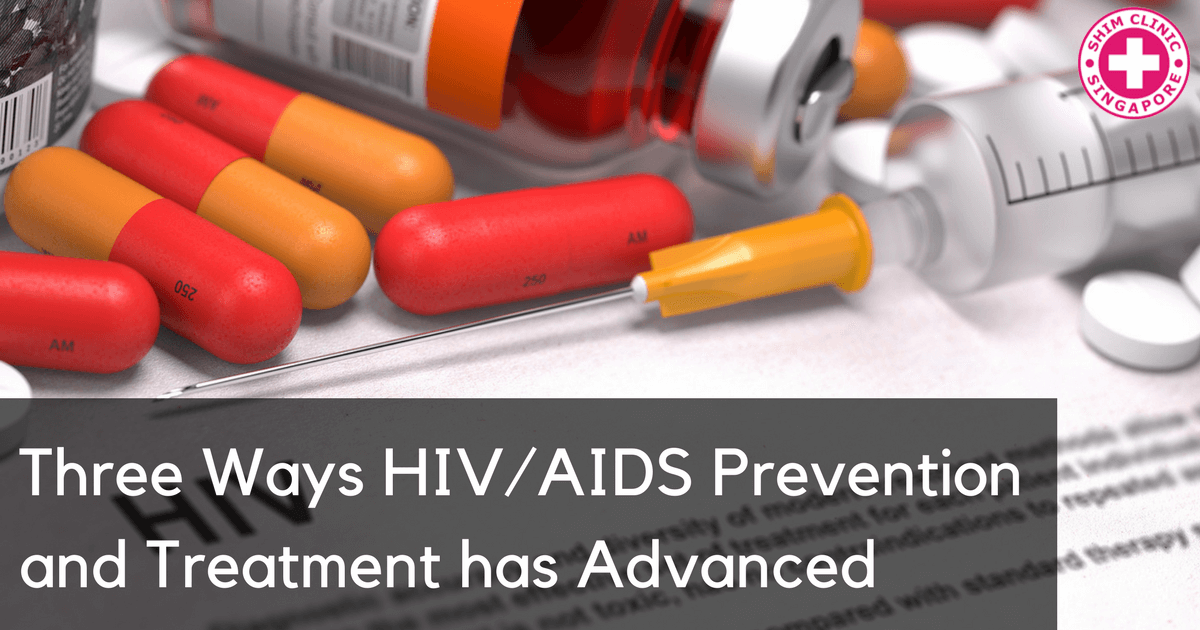In 1987, 30 years ago, the first HIV/AIDS drug, AZTI, was approved marking the beginning of the a remarkable fight against the disease. Treatment of HIV has since progressed allowing patients to live longer, healthier lives after testing positive to the virus.
While we still don’t have a cure for HIV yet, great strides have been made in the prevention and treatment methods available today. Here are three notable advances:
1. HIV Prevention Pill
Introduction of the single daily pill, Truvada, has greatly reduced the risk of HIV infection in high risk groups by up to 92 percent, as long it’s taken consistently. If a person takes Truvada daily before exposure, the medication will build up in the body and will kill the virus if the person is exposed, preventing full-blown infection.
There are few things you need to know before you take Truvada in order to maximize the efficacy of the drug.
- First, you must be HIV-negative. Go for HIV testing before you start taking the pill to make sure that you don’t already have HIV-1 infection.
- It’s easy for most HIV-1 tests to miss HIV-1 infection if an individual has recently become infected. Take note of any flu-like symptoms and let your healthcare provider know about such symptoms so that they can do further tests.
- Also make sure you go for STD testing to see if you have other sexually transmitted infections that may increase your risk of getting HIV infection.
- Once you start taking Truvada, make sure that you take the daily pill consistently and don’t miss any doses. Missing doses lowers the effectiveness of the drug.
2. HIV Test Home Kit
The Centers for Disease Control and Prevention (CDC) estimates that about 1 in 8 Americans are living with HIV and are not aware of their status. Knowing your HIV status is important as it gives you the chance to start treatment immediately prolonging your life and keep your partners protected from getting infected.
It’s recommended that everybody who is between 13 and 64 years old go for HIV testing at least once. If you have multiple sexual partners, inject drugs or have unprotected sex, then it’s recommended that you go for regular testing as you’re at a higher risk of getting infected.
According to numerous studies, the earlier a patient gets diagnosed and treated for HIV, the better the treatment will work.
However, many people skip testing because it can be intimidating and inconvenient. Sometimes people simply don’t know where to get tested without feeling judged. However, there’s a solution to that thanks to a new testing method that now allows you to test yourself at home.
The new mouth swab kit can be used quite easily and conveniently at home allowing you to test yourself as frequently as you want. It’s however, advised that you test yourself at least every three months as the antibodies the test looks for will often not show up until 1-3 months post exposure.
There are two home based kits approved by the Food and Drug Administration (FDA) in the US; Home Access HIV-1 Test System and the OraQuick In-Home HIV Test. you can buy any of the kits at any drugstores as long as you’re 17 years old.
Outside the US, approve home testing kits include:
- BioSure HIV Self Test (UK)
- Autotest VIH (France)
3. Same-Day Treatment
As noted, the earlier HIV treatment starts the better quality of life the patient will have. Starting treatment as soon as possible with HIV PEP (Post-Exposure Prophylaxis) helps preserve the immune system and possibly stop HIV transmission.
Most clinics however, skip same day treatment because they feel that patients who have just received an unexpected diagnosis may not be in a position to commit to treatment right away. It’s however, recommended that healthcare providers at least let patients know that this is the better option.
Same day treatment is also important because reduces the risk of patients getting lost to follow-up as most of them hardly ever go back to the same clinic hindering immediate treatment.
We still hope for a vaccine against HIV to finally eradicate this disaster but in the meantime let’s take full advantage of the preventive and treatment options available.

